The area around historic Wrightsville is defined by unsurpassed natural beauty. Travel to Long Level and you’ll find the Zimmerman Center for Heritage, which serves as the headquarters of the Susquehanna National Heritage Area and is the state’s official Visitor Contact and Passport Station for the Captain John Smith Chesapeake National Historic Trail.
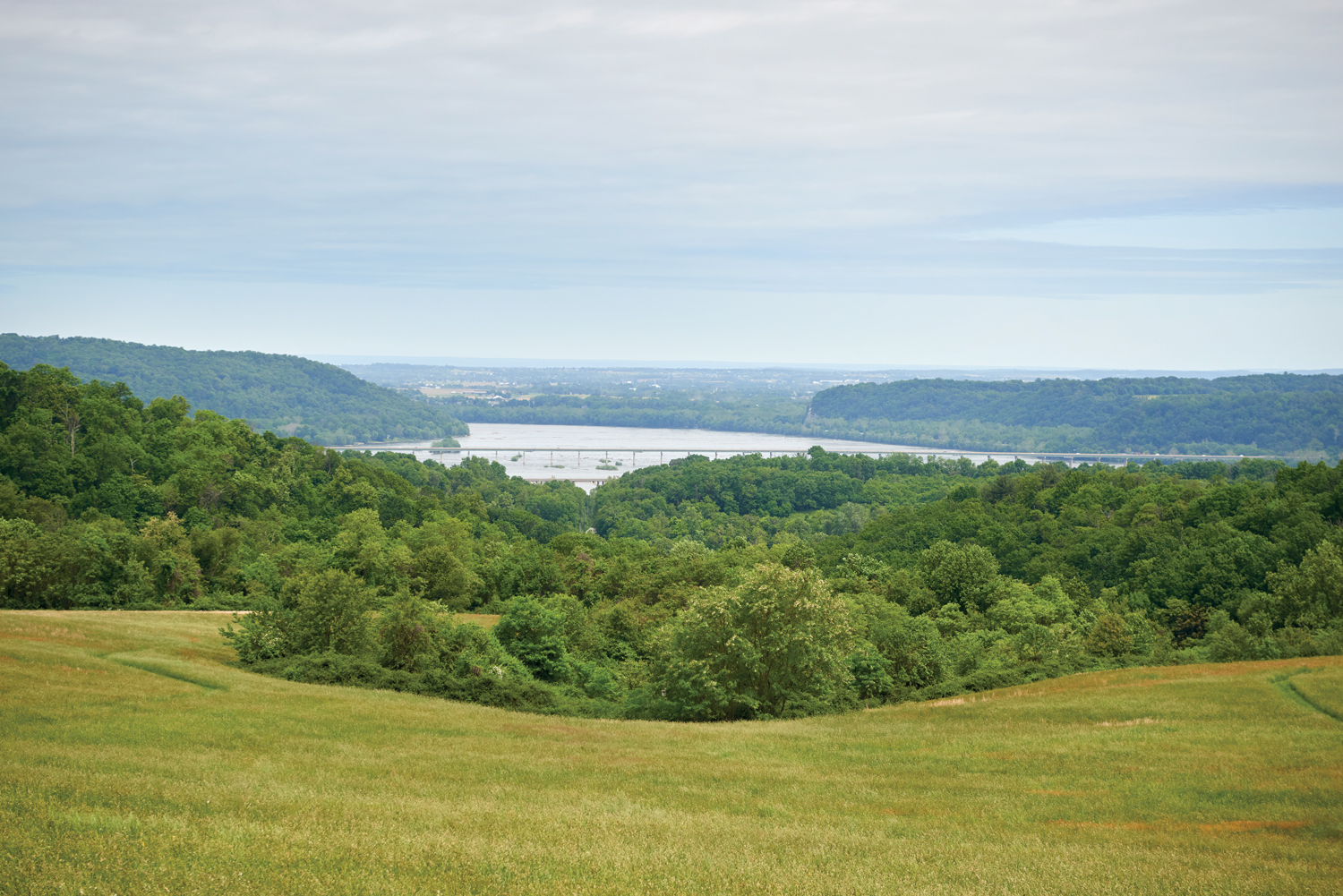
The view from atop Highpoint Scenic Vista & Recreation Area in York County takes in the riverscape on both sides of the Susquehanna. Interestingly, the border between Lancaster and York counties is not located in the middle of the river – Lancaster County extends to the shoreline of York County.
On March 12, 2019, the John D. Dingell Jr. Conservation, Management and Recreation Act (Senate Bill 47) was signed into law by the president. According to a press release from the Senate Committee on Energy and Natural Resources, “The bipartisan legislation contains more than 120 public lands, resources, sportsmen, conservation, and water management bills. The Senate passed the bill by a vote of 92 to 8 on February 12, and the House passed it on February 26 by a vote of 363 to 62.”
A Collaborative Effort
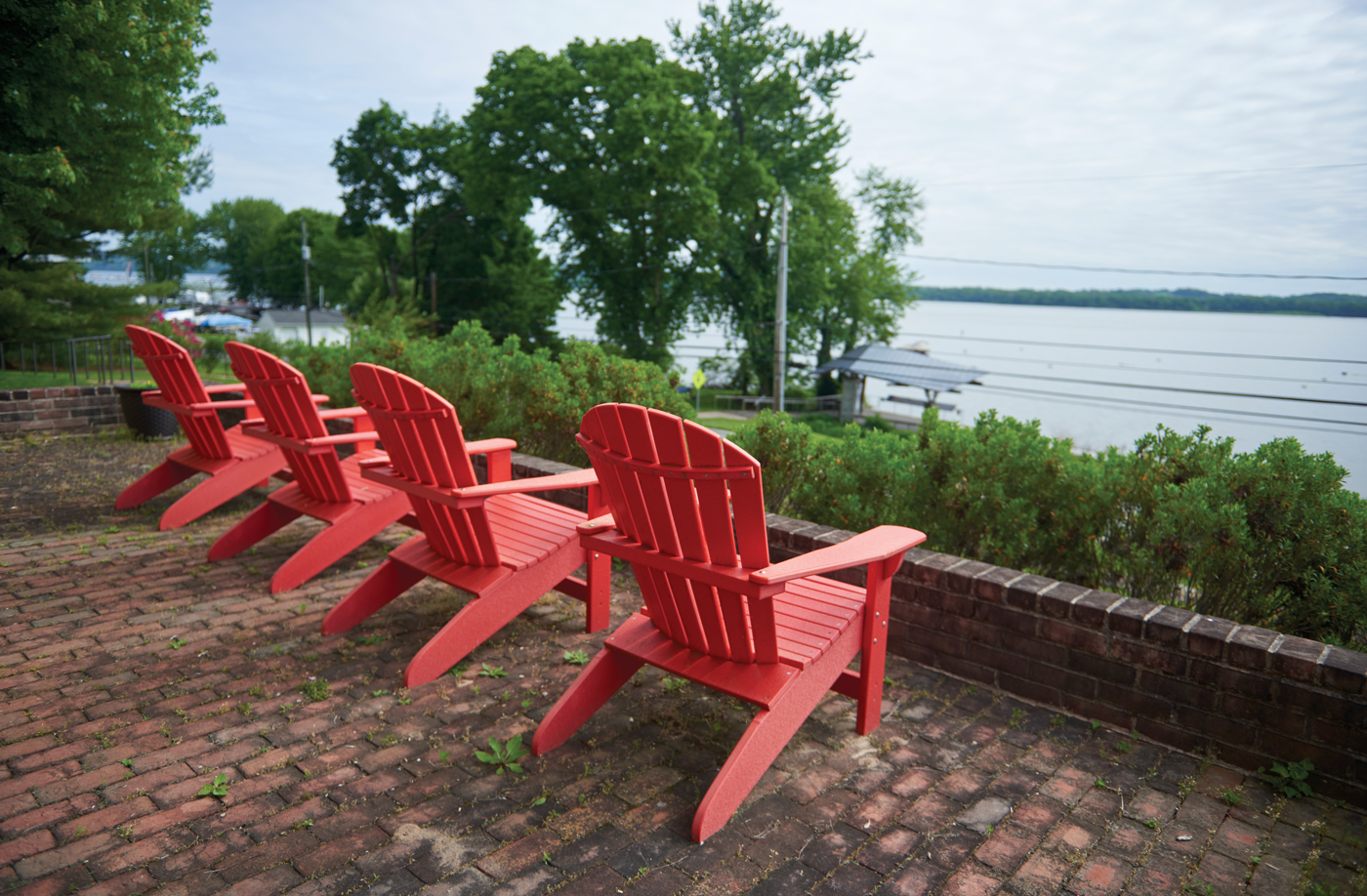
Adirondack chairs that fill a patio at the Zimmerman Center provide a comfortable place to relax and take in the solitude of the river.
Senate Bill 47 had an almost-immediate impact on Lancaster and York counties, as it designates the areas that border the lower watershed of the river as the Susquehanna National Heritage Area (SNHA). The designation is the 55th of its kind. It differs from national park status in that heritage areas are maintained through a combination of public and private funding sources. Heritage areas also differ from national parks in that people live, work and operate businesses within their boundaries. Heritage areas are free to use the national park logo and benefit from the presence of rangers from the National Park Service.
In the case of the Susquehanna National Heritage Area, funding and collaboration are provided by private donors and partners including the National Park Service, PA Department of Conservation and Natural Resources, Lancaster County Solid Waste Management Authority, County of Lancaster, County of York and Columbia Borough.
Actually, the groundwork for establishing such an area was launched in 2001, when Lancaster and York counties together were designated as one of 12 Pennsylvania Heritage Areas and a nonprofit organization – Lancaster-York Heritage Region – was founded to manage the heritage area. According to Mark Platts, who is the president of the SNHA, it represented the first time interested parties – public and private – from both sides of the Susquehanna River came together to make people aware of the natural and cultural treasures that exist within Lancaster and York counties, with the unifying factor being the Susquehanna River.
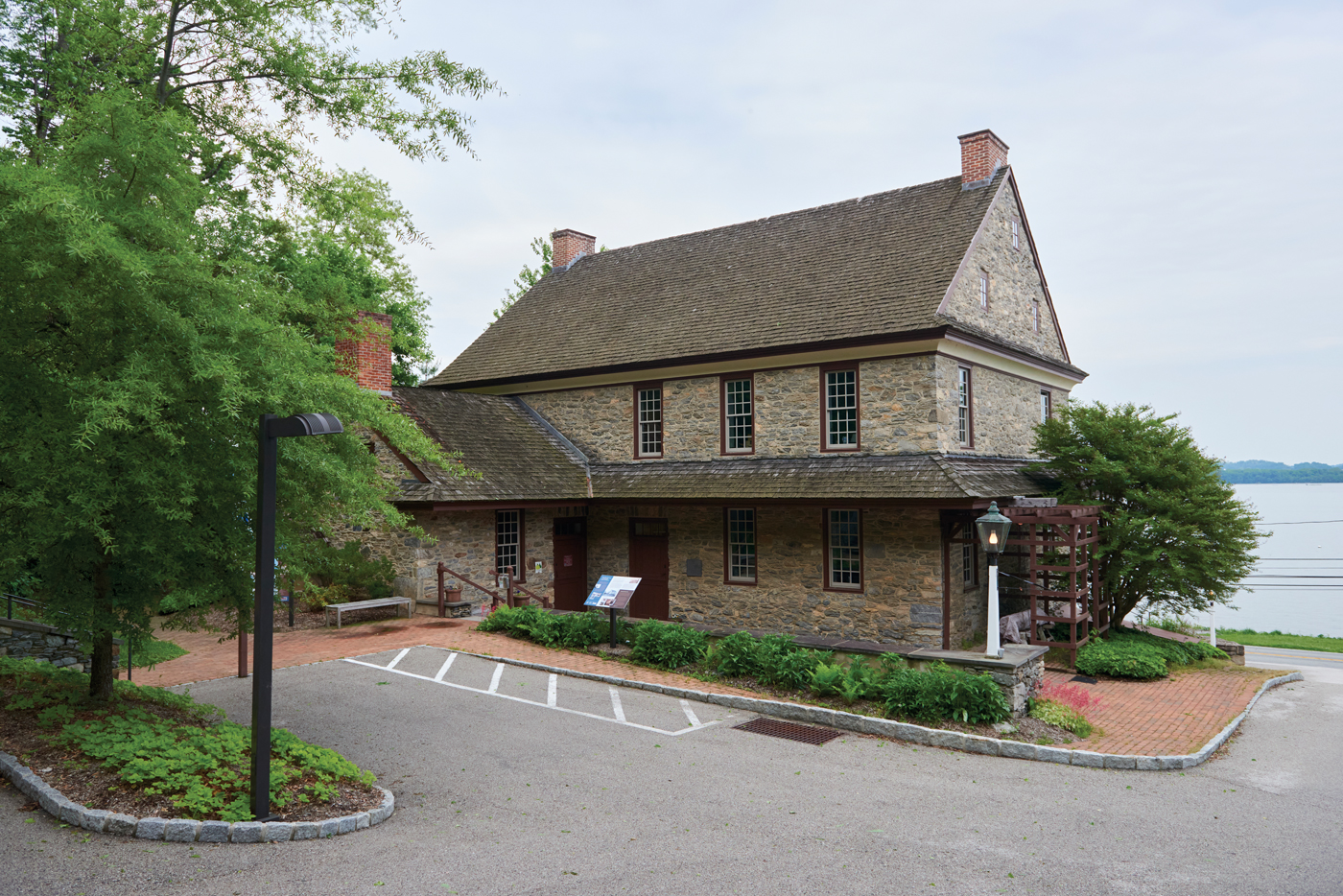
Susquehanna National Heritage Area is headquartered in a historic home that dates to the mid-1700s. John and Kathryn Zimmerman restored it in the 1990s and gifted it to the Lancaster-York Heritage Region in 2007, thus the center is named in their honor.
Mark is very aware of the “urban myths” that surround rivers and hold that they create psychological barriers that prevent locals from traveling to “the other side” for shopping, attending community events and playing tourist. He views a river – especially his beloved Susquehanna – through different eyes. “Rivers are uniters, not dividers,” he professes. He personifies that sentiment, as he makes his way to Long Level, York County, from his home in Manheim Township, Lancaster County, nearly every day. He appreciates and loves to experience what both counties have to offer.
Mark, who grew up in York County, brings a wealth of experience in urban planning, community development, landscape conservation and heritage tourism development to the job. After working in Orlando, Florida, Seattle, Washington, and Washington, D.C., he accepted the position of Lancaster-York Heritage Region’s first executive director in 2003. “Our office was located at the York County History Center,” he recalls. Educational and recreational programs offered by the Lancaster-York Heritage Region debuted that same year.
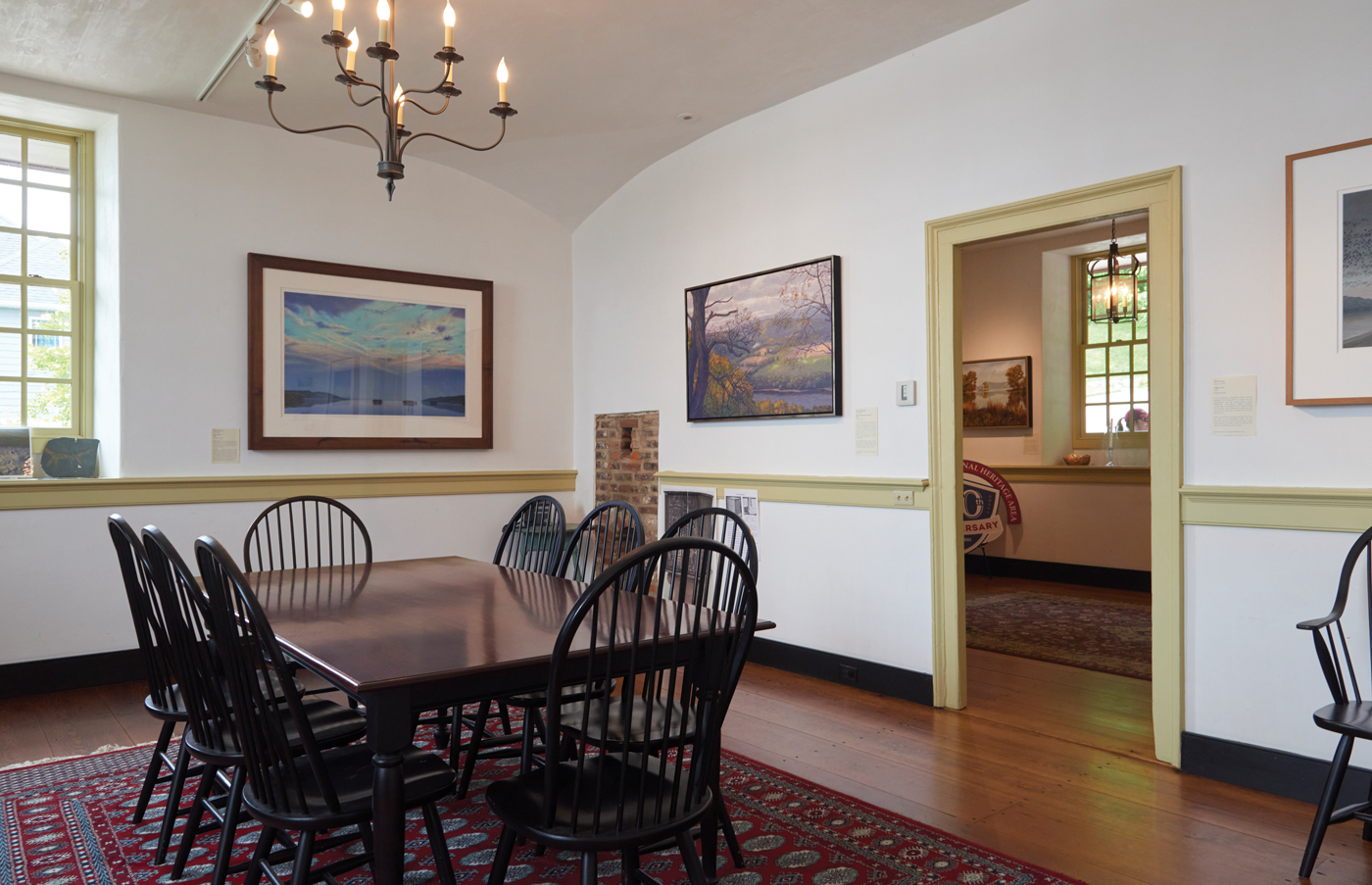
The walls of the rooms inside the Zimmerman Center are hung with river-oriented paintings. The painting on the left – Down River – is by Mark Workman of Lititz.
By 2008-09, those initiatives were “coming together” and making an impact. After a strategic-planning process with the board of directors and staff, the group changed its name to Susquehanna Gateway Heritage Area, shifting the focus to river history and outdoor recreation. Thus began an 11-year effort for Congressional designation of both counties as a National Heritage Area. “From a marketing perspective, there are countless stories to be told here that relate to the Revolutionary and Civil wars, Captain John Smith venturing up the river, the Susquehannocks, the Underground Railroad, the burning of the bridge in 1863, the development of industry and the list goes on,” Mark notes.
Growth is also attributed to gaining an official “home” for the regional organization. In 2007, John and Kathryn Zimmerman donated a historic home in Long Level to the Lancaster-York Heritage Region. The house, which dates to the mid-1700s was beautifully restored by the Zimmermans in the 1990s. In honor of their contribution, it was named the John and Kathryn Zimmerman Center for Heritage.
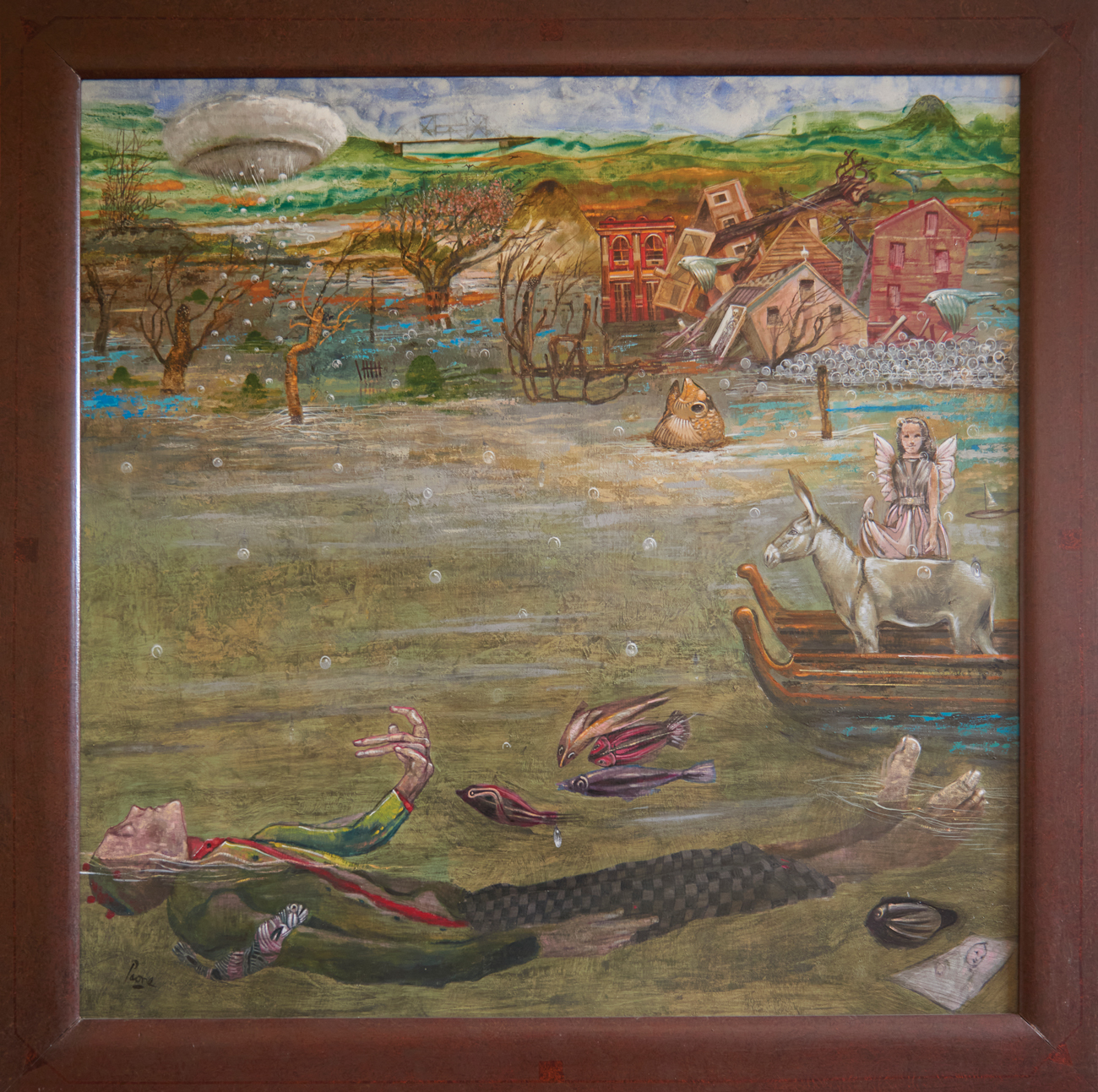
This year marks the 50th anniversary of Hurricane Agnes, which devastated the area in late June 1972. At the time it was the costliest hurricane on record, as it caused $2.1 billion in damage that extended from the Caribbean to Canada. Artist Peter Paone’s Agnes Susquehanna – Born 1972 depicts the devastation and suffering that occurred along the Susquehanna in the aftermath of the storm.
Since moving to the site, SNHA has enhanced it with a waterfront pavilion, a boardwalk, a floating dock, a paddle-craft landing and much more. Inside, a room is devoted to the story of the Susquehannocks. Exhibits of historical items are also on view. Art lovers will appreciate that the walls of each room are hung with paintings that depict various aspects of the river and were part of the Visions of the Susquehanna exhibit that was curated by Wrightsville artist Rob Evans in 2006 and traveled the state through 2008. According to Mark, artists from the 1800s were drawn to the Susquehanna River, as they considered the river valley to be an exotic location.
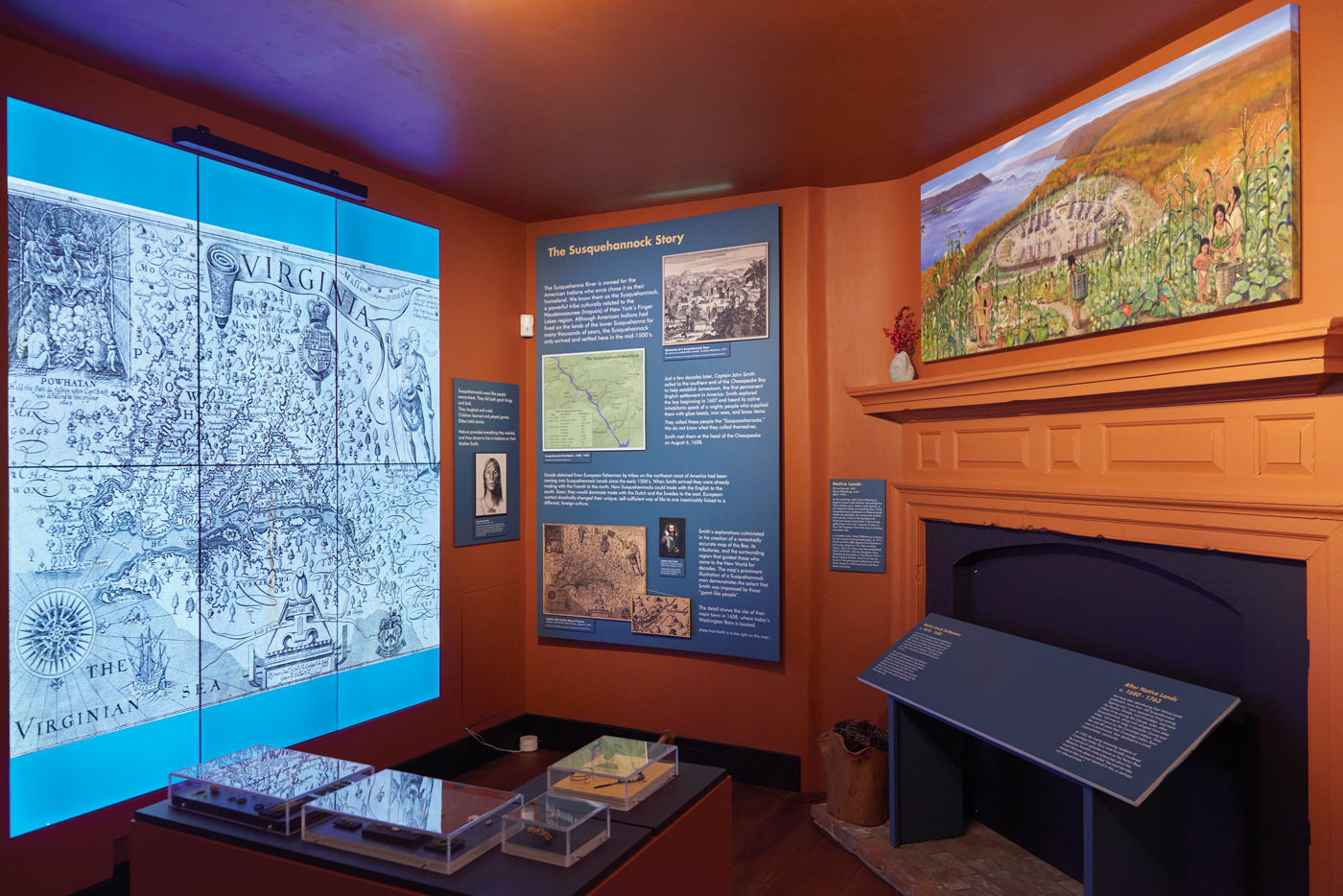
One of the rooms in the Zimmerman Center is dedicated to the story of the Susquehannocks, whose last-known encampment was located at the rear of the property.
“The fact that we now had a high-quality visitors facility on the river prompted the National Park Service to designate the site as an official visitor center for the Captain John Smith Chesapeake National Historic Trail, a water trail that traverses the entire Susquehanna and the Chesapeake Bay,” Mark explains of bringing the National Park arrowhead symbol to the entire area for the first time.
Behind the Zimmerman Center is the 180-acre Native Lands County Park, portions of which overlap the Mason-Dixon Trail and whose waystops include a cemetery in which members of the Dritt family are buried. Johann Tritt/Dritt, a Swiss émigré, soldier, farmer, businessman and ferry operator, had purchased the property in 1783.
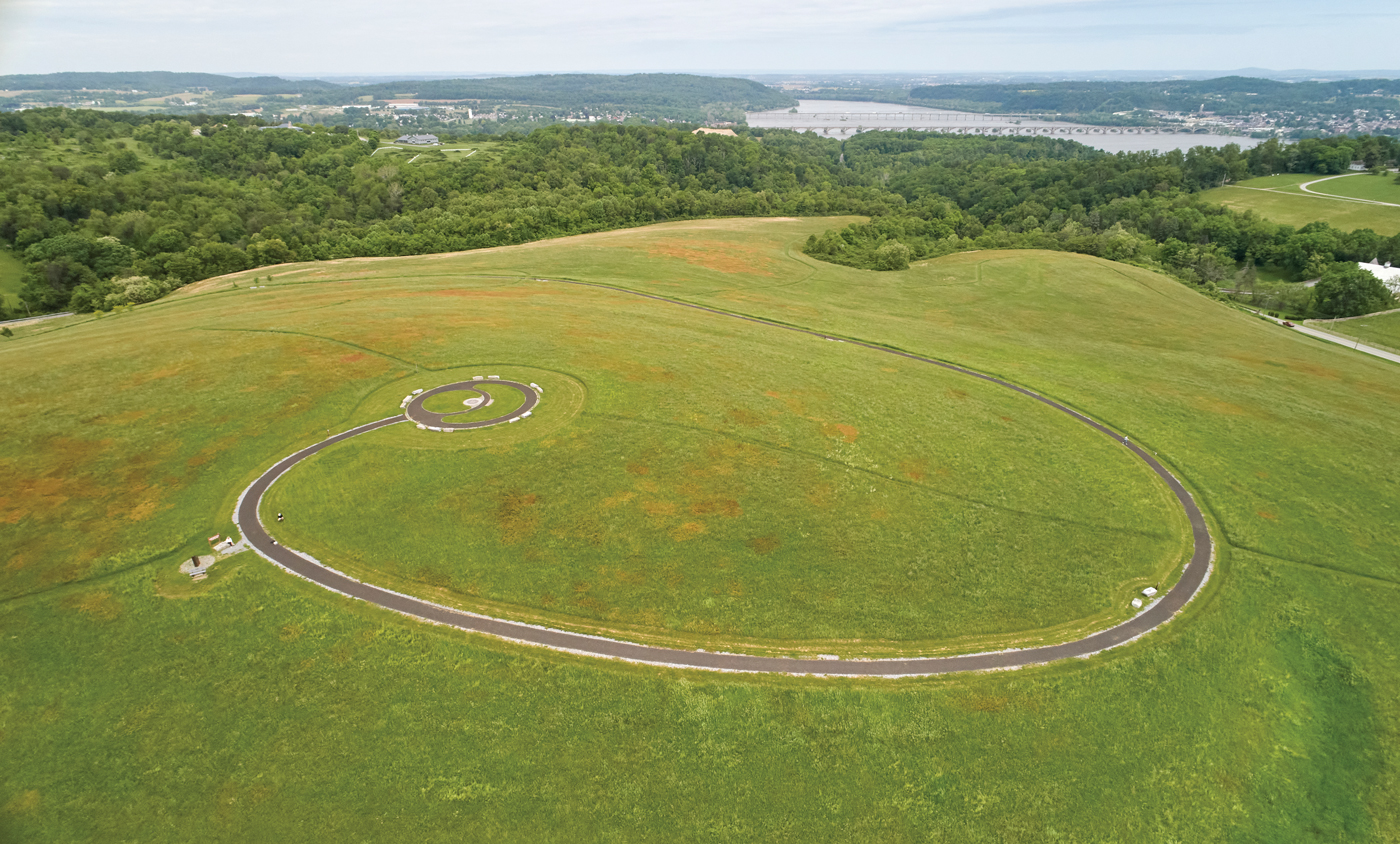
Highpoint, which is comprised of 87 acres, was created in 2007. The pathway that circles the hill leads to a summit that provides unsurpassed views of the riverscape and countryside. The Mason-Dixon Trail bisects the park.
Previous to that, the property had been home to the last-known settlement of the Susquehannocks, who departed the area by 1680, making their way to Maryland. Some remnants of the tribe returned several years later, settling in Lancaster County, where they were known as the Conestogas. Trails meander through hayfields and at times offer views of the river and beyond that, Lancaster County. It’s truly a beautiful and peaceful place to commune with nature.
Across the river is another SNHA-managed facility – Columbia Crossing River Trails Center – which is owned by Columbia Borough and sits in the shadow of Veterans Memorial Bridge and is fronted by Columbia River Park. The center hosts educational programs, art exhibits and serves as the trailhead for land and water routes. It can also be rented for private events. It is managed by Hope Byers.
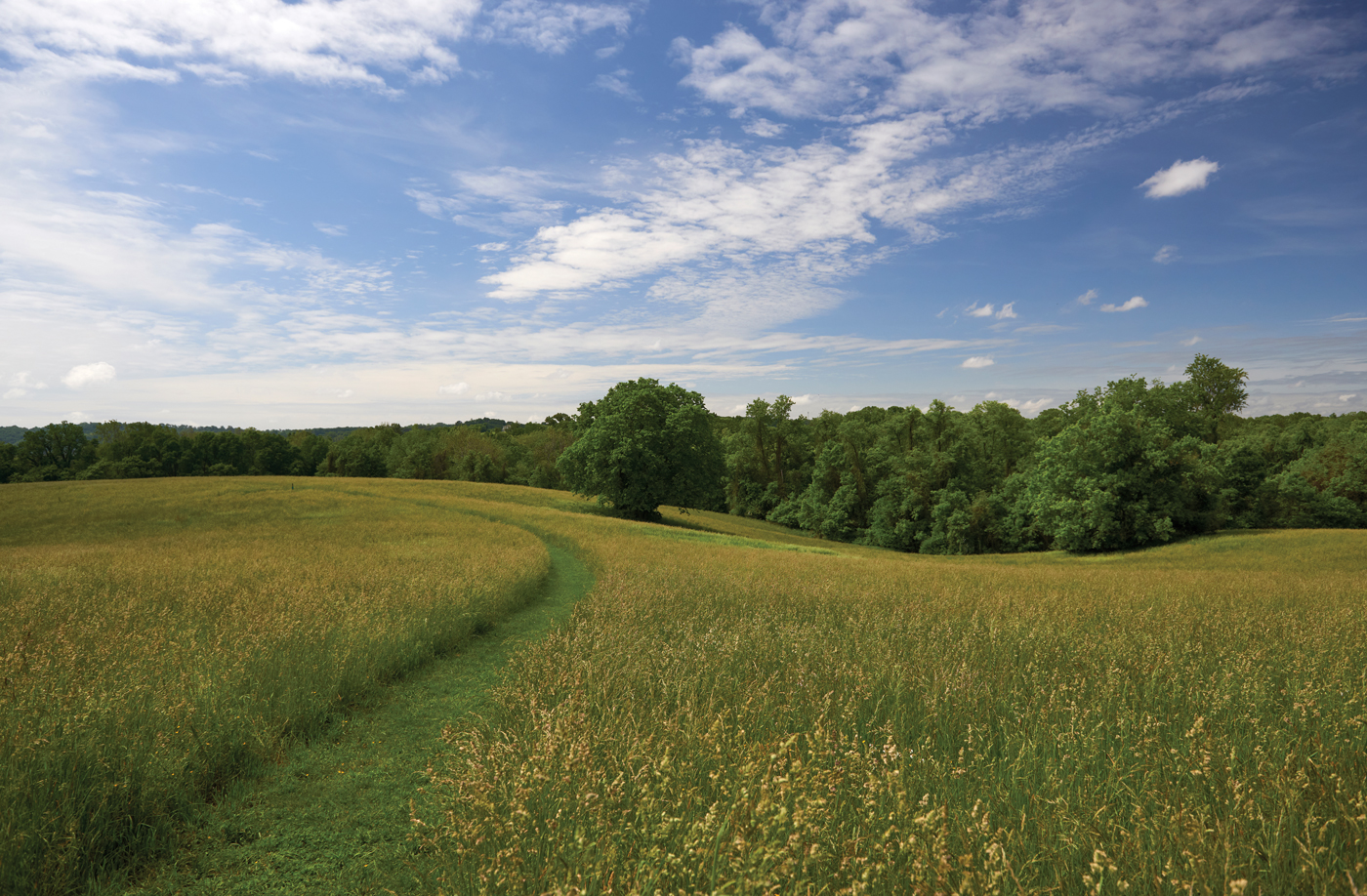
Native Lands County Park features trails that meander through hayfields and include waystops that relate to area history.
Both centers are utilized by school groups for field trips. Students in fourth grade visit the Zimmerman Center for NPS Junior Ranger field trips that entail history lessons (via a scavenger hunt), hiking and creek walks. They are also sworn in as junior rangers at the end of their visit. Fifth graders head for Columbia Crossing for Canoemobile field trips, through which they learn more about river history and the environment and then go on canoe rides. The programs are made possible through a grant from the National Park Foundation. Mark estimates that 2,000 students have thus far visited the two sites. “It’s really gratifying to welcome the students,” he says.
As for adults, visitation to the area has no doubt surpassed expectations. Finding parking at lots along the river on weekends is a challenge. When Jordan Bush and I were out for photography purposes on weekdays in mid-May, we were surprised to see the number of cars in the parking lots. Hit the trail – any trail – and you’ll encounter hikers, dog walkers, parents pushing baby strollers, roller bladers and, of course, lots of bicycle riders. The opening of the Safe Harbor trestle that connects two portions of the Enola Low Grade Rail Trail will undoubtedly spur new interest and turnout.
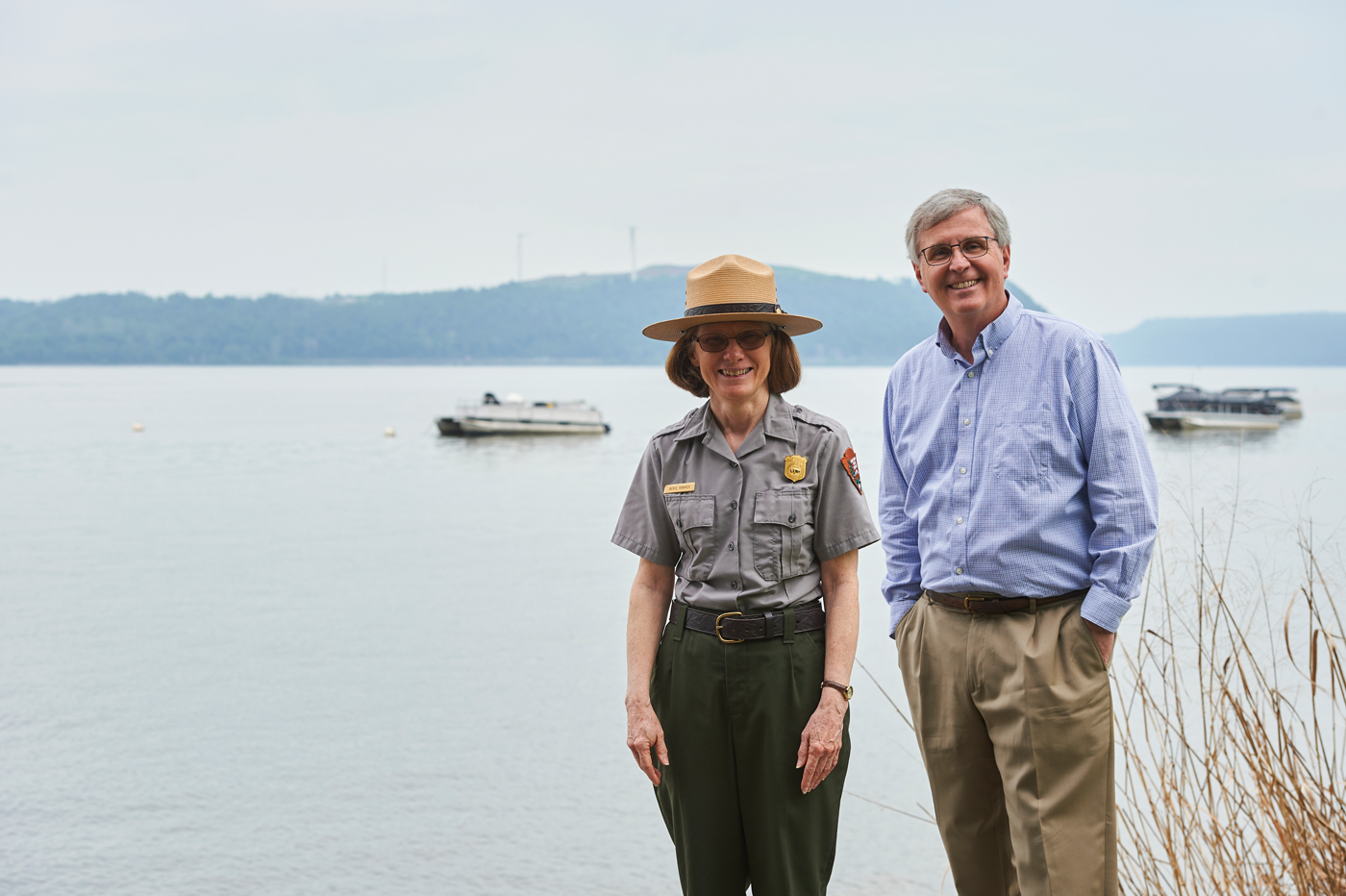
Mark Platts (right) is the president of Susquehanna National Heritage Area, while Jackie Kramer is on staff as a park ranger with the National Park Service.
Mark became aware of the phenomenon when the Zimmerman Center was closed during COVID shutdowns but the park behind the facility remained open. “Even though the center was closed for two months in 2020, I kept coming to the office,” he recalls. “I remember the first time I left for the day and walked outside to find our parking lot packed with cars. It was an amazing sight to see!”
We’re Going to Need a Bigger Boat!
Over the course of the last three summers, SNHA offered free tours of the river via pontoon boats. “We were doing four trips a day on Saturday and Sunday, each lasting an hour and 20 minutes,” Mark says. “When word first got out, so many people were trying to make reservations online that the website crashed.”
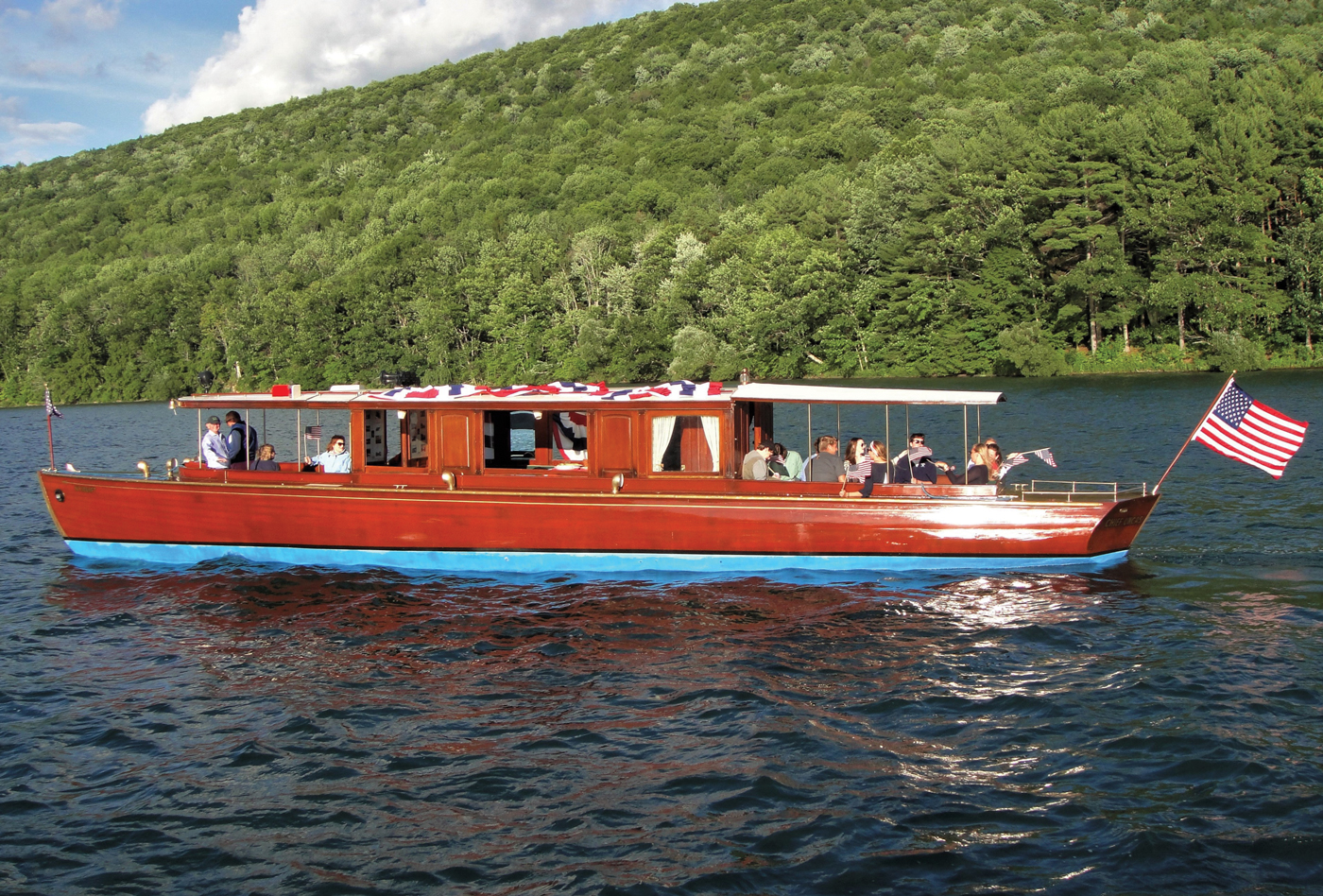
Chief Uncas, a 55-foot-long electric-powered boat that was purchased by SNHA in 2021, will become a tour boat on the Susquehanna later this summer. Visit SusqNHA.org for reservation information. Photo courtesy of SNHA.
Taking a cue from Chief Brody in the movie Jaws, Mark saw the need for a bigger boat. Fortunately, the owners of Shank’s Mare Outfitters in Long Level knew of the perfect candidate from visiting Lake Otsego – the headwaters of the Susquehanna – in Cooperstown, New York. Dating to 1912, the classic electric-powered boat was originally owned by Adolphus Busch (of Anheuser-Busch beer fame), who named it Chief Uncas (in honor of a Native character in James Fenimore Cooper’s novel, The Last of the Mohicans).
The boat remained in the Busch family until 2021, when SNHA made an offer to purchase it. “Walt Rowen, who was the board chairman at the time, and I went up to Cooperstown in 2019 over the Christmas holidays to look it over,” Mark says. They returned in September 2020 to take a cruise on the boat. “It was pleasant and relaxing,” he recalls. SNHA – with help from private donors and public grants – successfully purchased it in July 2021. The purchase showcased the partnership forged by Lancaster and York counties as major funding was provided by Ann Barshinger (Lancaster) and Doug Hoke and George and Bambi Long (York).

Students in fourth grade can visit the Zimmerman Center for field trips, while fifth graders travel to Columbia Crossing. Photo courtesy of SNHA.
The soon to be Coast Guard-certified boat arrived in Marietta in October 2021, where it has been stored and undergoing a cleaning/fine-tuning process. SNHA hopes to have it operating in Long Level by mid-July and continuing through early October. Riders will incur a fee that will help to keep the 55-foot-long boat in tip-top condition for years to come. Mark also sees it being used for private events.
We Need a Bigger Visitors Center, Too!
Mark is especially excited about the recent acquisition of the historic Mifflin house and farm by SNHA partner, The Conservation Fund, for transfer to SNHA within a year. The farm sits off the Route 30 exit for Wrightsville. Its original owner was John Wright Sr., who operated a ferry service in Columbia and went on to purchase hundreds of acres in what is now Hellam Township. His children inherited his holdings, with Susanna Wright and her husband, Jonathan Mifflin, being granted the acreage that included a farmhouse. They named the farm Hybla. Their son, Samuel, then inherited it. As Quakers, the Wrights and Mifflins denounced the practice of slavery and Hybla became an integral part of the Underground Railroad, as Wrightsville-Columbia provided enslaved people with a major connection to points further north. Hybla is one of only a few “stops” that can be verified as Samuel Mifflin shared his memories with Dr. Robert Smedley, who wrote History of the Underground Railroad in Chester and the Neighboring Counties of Pennsylvania in the 1880s.
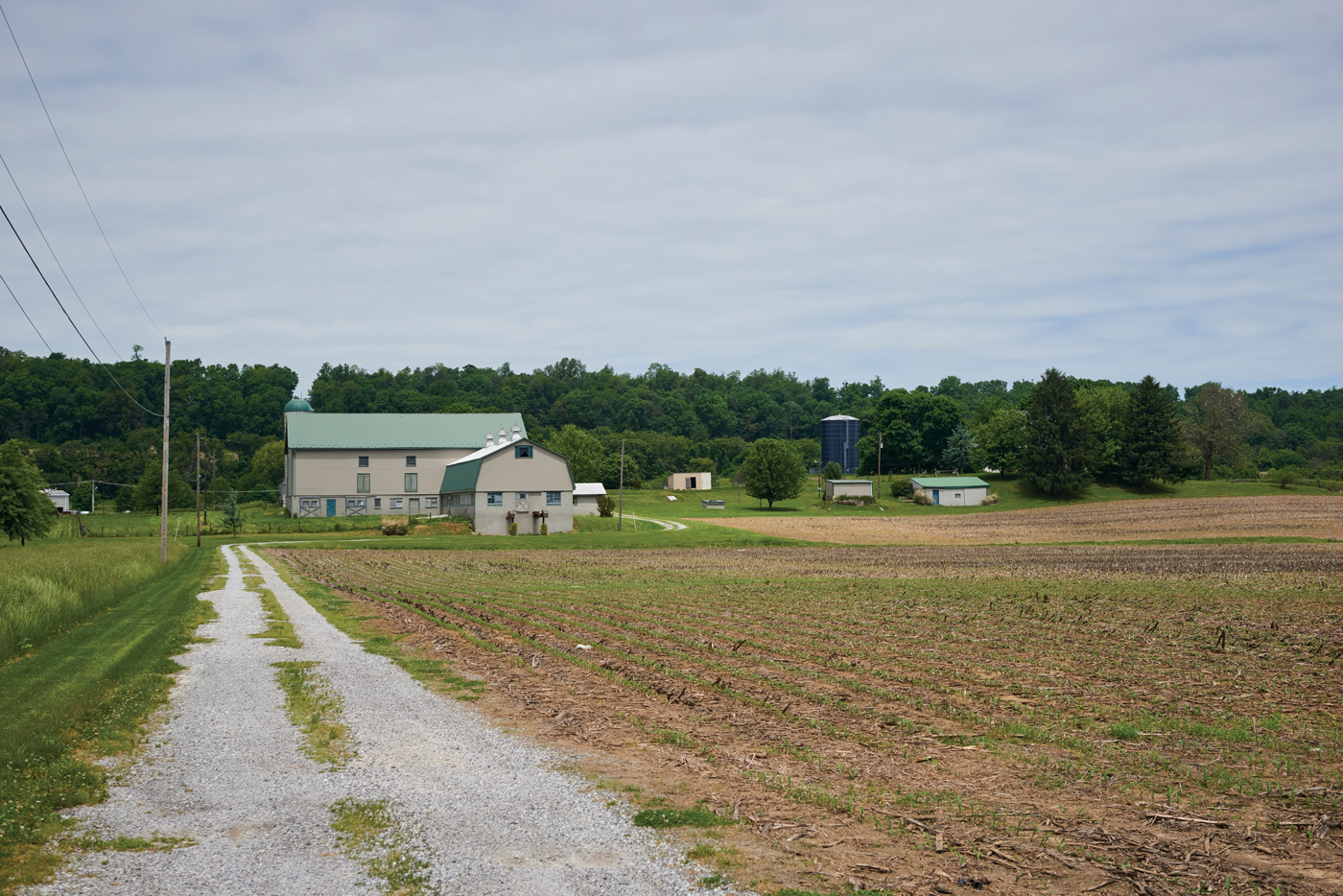
The Mifflin Farm, which was originally owned by members of the Wright family, has been substantiated as a stop on the Underground Railroad. It will become a major visitors center in the region. Plans call for the development of a Discovery Center and an educational center that will focus on the Underground Railroad. Focus will also be put on the skirmish that took place on the farm between Confederate and Union soldiers prior to the burning of the bridge that spanned the river in order to prevent Confederate forces from advancing to the North.
The farm is also significant in that it was the scene of a skirmish between Confederate and Union forces in late June 1863. The Confederates planned to cross the covered bridge that spanned the river between Wrightsville and Columbia and make their way to Philadelphia or Harrisburg. Union troops were outmanned and retreated to Columbia, where they made plans to block Confederate progress across the bridge with explosives. When that failed, they resorted to destroying the bridge with fire. A few days later, the Battle of Gettysburg ensued.
SNHA will complete acquisition of the property from The Conservation Fund in 2023. Plans call for transforming the property into a visitors center. Potential projects include a Discovery Center in which the area’s history will be shared through heritage exhibits and art. Adaptive reuse will be used to restore and modernize the barn complex for those purposes. The farmhouse will also be restored; plans call for it to serve as an educational center whose focus is interpreting the Underground Railroad. A park-like area will focus on the skirmish that took place prior to the burning of the bridge. A greenway will link the property to the river. Observation silos will provide views of the countryside and riverscape. “It’s probably a 10-year project,” Mark says.
The visitors center is part of the region’s quest to encourage visitors to spend “just one more day” in the area. “We want visitors to experience our natural wonders and fascinating history,” Mark says, noting that the economic impact would be substantial for river towns such as Wrightsville, Columbia and Marietta. “Ten million visitors come to Lancaster and York counties on an annual basis,” he says. “They spend an average of $200-$400 per day. If just five percent of those visitors would spend an extra day with us, the region would definitely benefit,” he says, placing the increased revenue at $100,000,000 per year.
For more information about the activities that are available in the Susquehanna National Heritage Area, visit SusqNHA.org.
For information about Wrightsville events, visit historicwrightsvillePA.org.





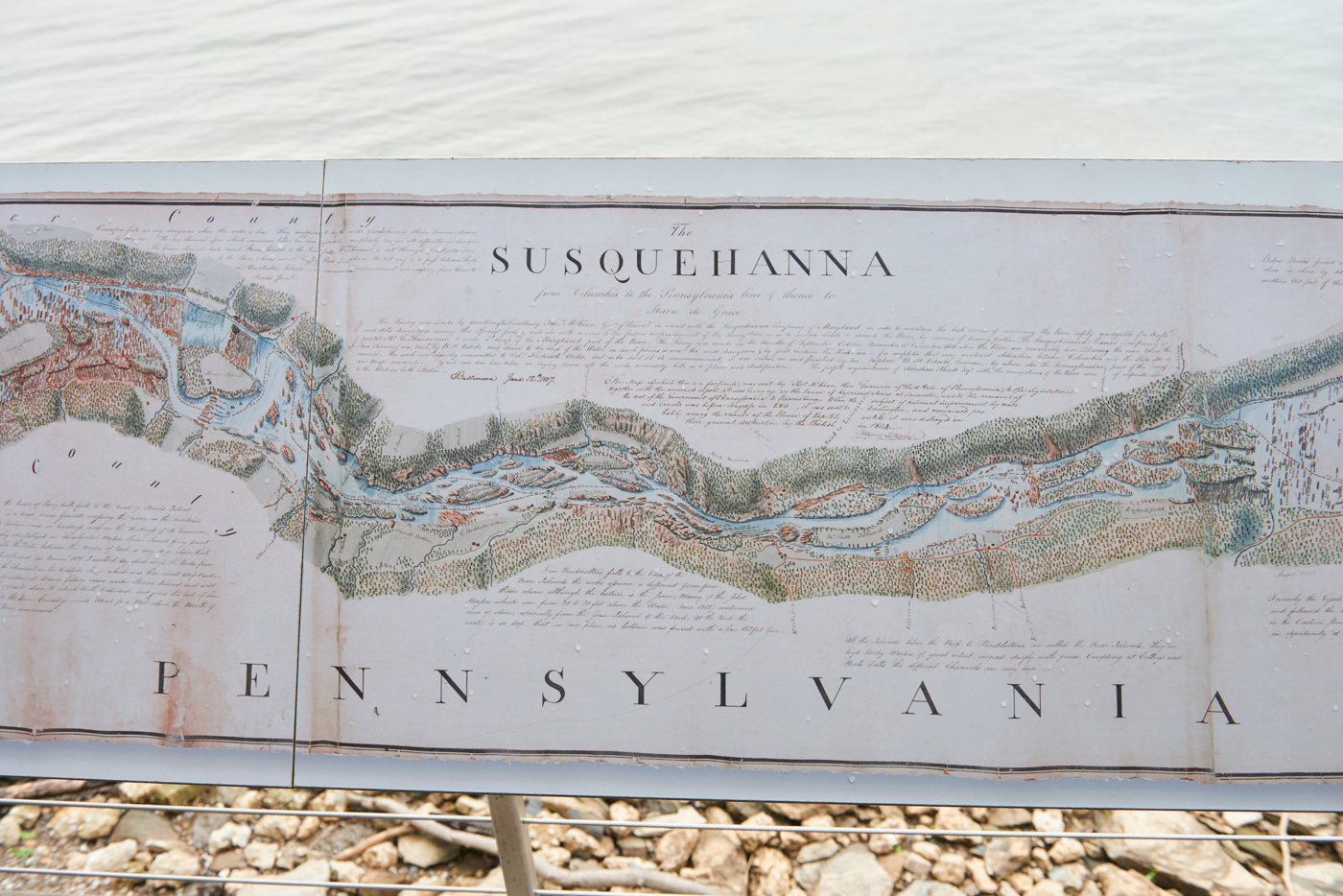
SHARE
PRINT